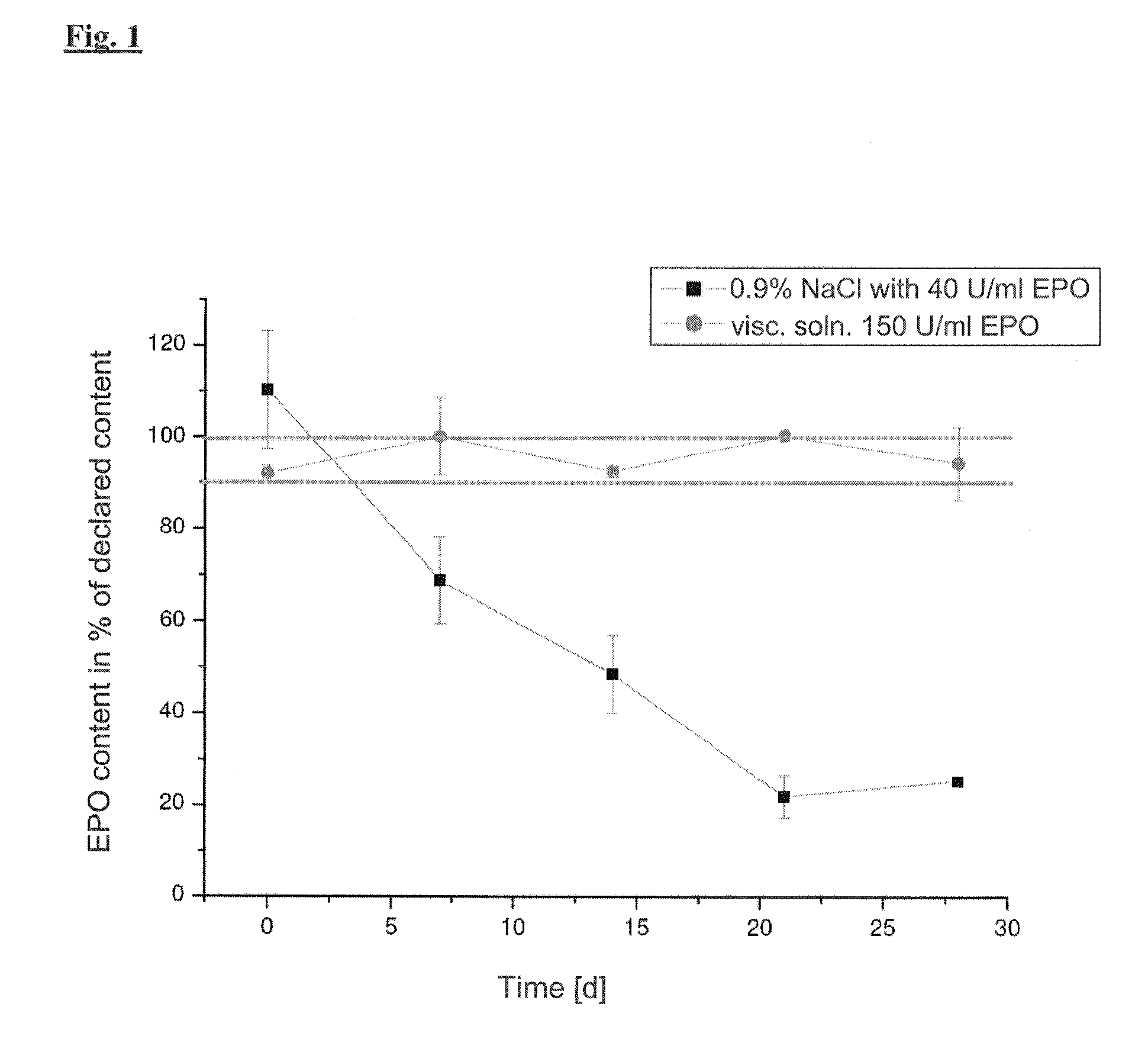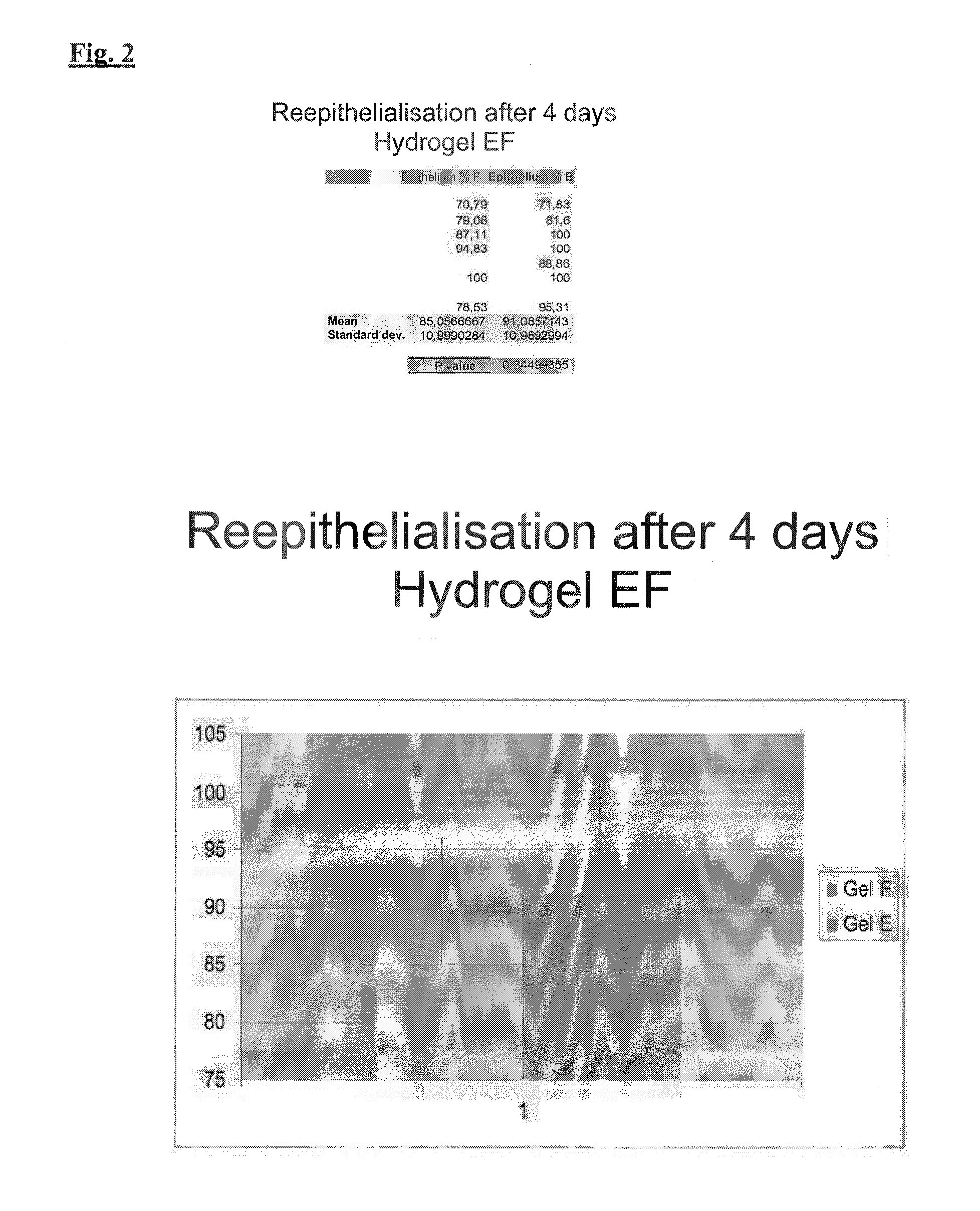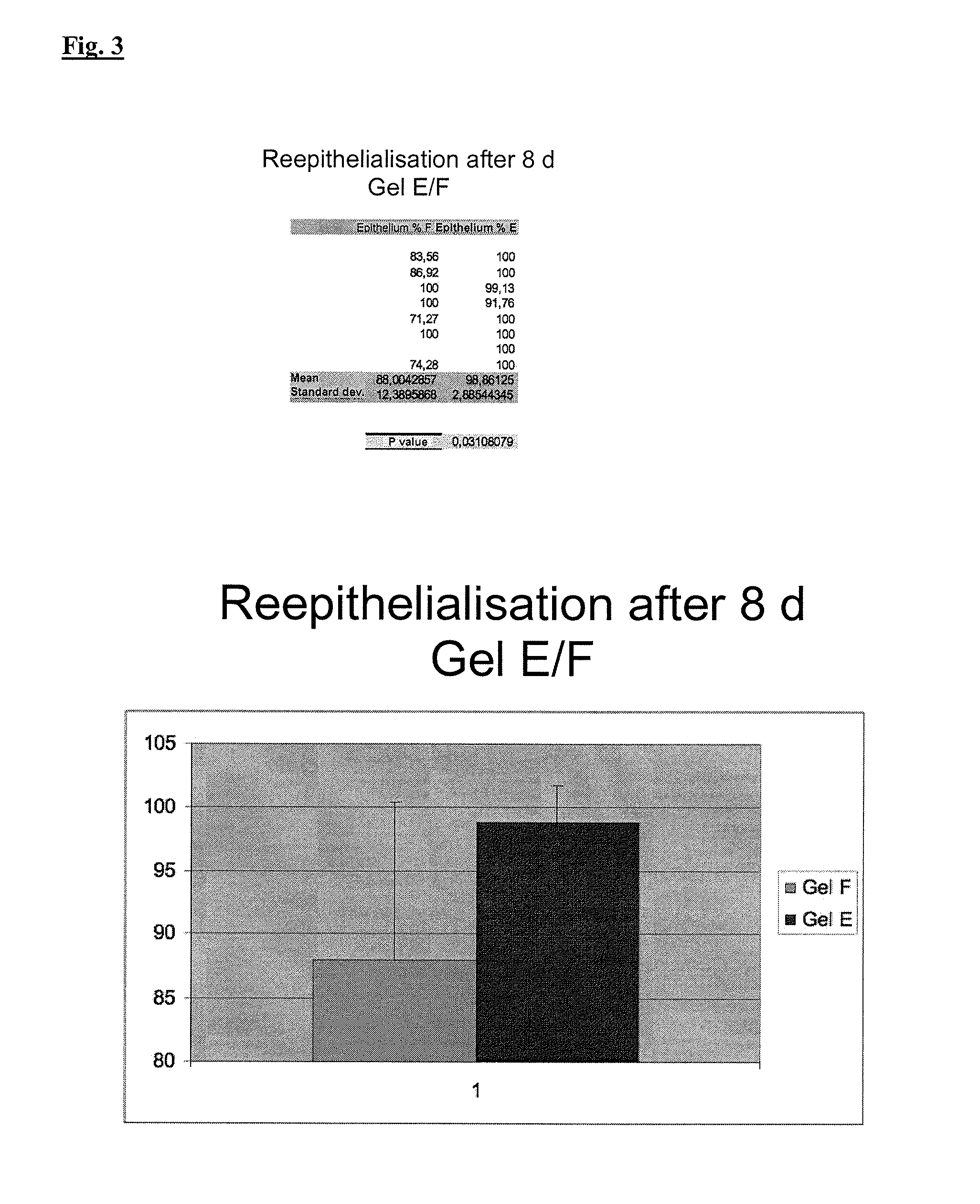Topical application and formulation of erythropoietin for skin wound healing
a technology of erythropoietin and skin wound healing, which is applied in the direction of growth factors/regulators, pharmaceutical non-active ingredients, animal/human proteins, etc., can solve the problems of no effect, no effect, or no effect on tissue regeneration, and systemic application of tissue protection or tissue regeneration is associated with significant risks, and the administration of epo can only be combined
- Summary
- Abstract
- Description
- Claims
- Application Information
AI Technical Summary
Benefits of technology
Problems solved by technology
Method used
Image
Examples
example 1
[0145]Erythropoietin (EPO) is used in the form of the finished medicament (NeoRecormon 10,000 TU, powder and solvent for the preparation of an injection solution in cartridges, batch MH68260 08, PZN 742 914 3, Roche Reg. Ltd., Welwyn Garden City, UK).
The active compound is converted into a pre-sterilisable preparation under aseptic conditions using the following gel formers:
[0146]Hydroxyethylcellulose Ph. Eur. 5.1 (trade name: Hydroxyethylcellulose 250 HX Pharm, batch 06E29-N01, Fagron, D-Barsbüttel)[0147]Carmellose-sodium / carboxymethylcellulose Ph. Eur. 5.0 (trade name Tylopur C600, batch 516 762 65, Caelo, D-Hilden)[0148]Methylcellulose / hydroxypropylmethylcellulose USP (trade name Metolose 90 SH-100, batch 206314, Shin-Etsu, D-Mülheim)[0149]Povidon Ph. Eur. 5.0 (trade name Kollidön 25, batch 74-0915, BASF, D-Ludwigshafen)[0150]Varihesive®, Convatec, Varihesive E® is a hydrocolloid bandage. It consists internally (lying on the wound) of a hydrocolloid layer based on a swellable pol...
example 2
Formulation of Hydrogels Containing No Active Compound
[0151]The gel former to be investigated is weighed out into a tared mortar under low-germ conditions and ground with the intended amount of glycerol. After addition of water for injection purposes as bulk in portions, the preparation is allowed to swell for at least 2 hours, before evaporated water is replaced and the hydrogel is homogenised in the mortar. The hydrogel is transferred into an injection vial which has been sterilised with hot air in 3.3 g portions, which can be carried out, depending on the consistency of the preparation, by drawing up by means of a syringe or by transfer into an Unguator jar and subsequent dispensing with the aid of an attached Unguator applicator (both Gako Konietzko GmbH, D-Bamberg). The sealed injection vial is then sterilised by means of saturated, live steam under standard conditions of Ph. Eur.
example 3
Evaluation of the Rheological Properties of the Hydrogels Containing No Active Compound
[0152]In order to be able to estimate the thermal degradation of the gel formers during autoclaving, sterilised hydrogels are assessed visually with unsterilised samples and measured in a plate-and-cone viscometer (GVO rheometer, Bohlin Instruments, Cirencester, GB) at a temperature of 20.0° C. and a cone apex angle of 1°. The final gel former content is defined in accordance with the therapeutic demands made of the formulation.
PUM
| Property | Measurement | Unit |
|---|---|---|
| viscosity | aaaaa | aaaaa |
| viscosity | aaaaa | aaaaa |
| viscosity | aaaaa | aaaaa |
Abstract
Description
Claims
Application Information
 Login to view more
Login to view more - R&D Engineer
- R&D Manager
- IP Professional
- Industry Leading Data Capabilities
- Powerful AI technology
- Patent DNA Extraction
Browse by: Latest US Patents, China's latest patents, Technical Efficacy Thesaurus, Application Domain, Technology Topic.
© 2024 PatSnap. All rights reserved.Legal|Privacy policy|Modern Slavery Act Transparency Statement|Sitemap



